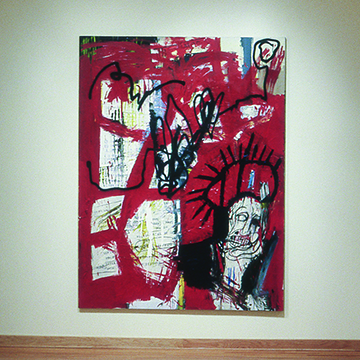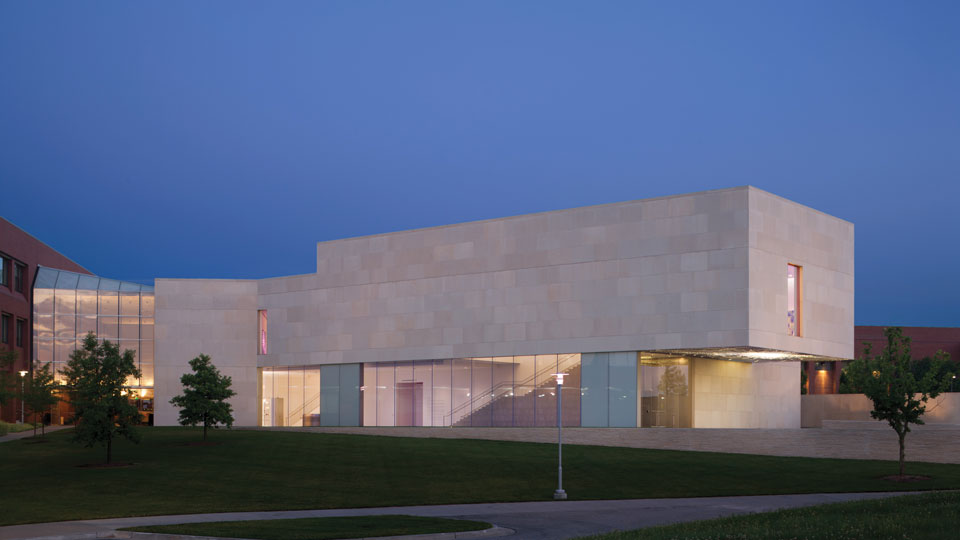Jean-Michel Basquiat
The large-scale major paintings featured in the Gallery of Art exhibition span the years 1981 to 1987 and include works from three broad phases of Jean-Michel Basquiat’s career. Recurring subjects and images in his work include autobiography, black history, popular culture, graffiti-related signs and symbols, and carefully chosen words and phrases. Basquiat, who died in 1988 at the age of 27, achieved international recognition during his brief but very productive nine-year career. In 1992 his work was the subject of a traveling retrospective exhibition organized by the Whitney Museum of American Art.
At 7 p.m. Tuesday, Oct. 4, in Carlsen Center 211, Richard Marshall, curator of the Jean-Michel Basquiat retrospective exhibition will present a lecture on Basquiat’s work.
Born of Haitian and Puerto Rican parents in a middle-class section of Brooklyn, NY, Basquiat, like fellow artists Keith Haring and Fred Braithwaite, began his career by illegally painting on public property images and words which commented on urban life and the art world. By 1980, Basquiat had become an established figure in the downtown New York Club scene and had given up graffiti art for more formalized paintings and drawings on canvas and paper.
New York Times art critic Roberta Smith described Basquiat’s work as a “fierce, don’t look back, pulsation of words, diagrams, screeching colors and over-the-edge bravado.” Klaus Kertess, adjunct curator of drawings at the Whitney Museum, states that, “perhaps more than any other member of his generation, Basquiat was responsible for reintegrating drawing into painting. Knowledgeably and fearlessly, he brought new life and credibility to the kind of frenetic mark making that preceding generations of the avant-garde had suppressed and/or abhorred.”
Influenced by Abstract Expressionism, jazz and his ethnic heritage, Basquiat synthesized the sights and sounds of the modern American inner city into a unique and powerful artistic vision.
The gallery guide features an essay “The Delay of Dying: A Dialogue” by Hilton Als, a writer living in New York City.





